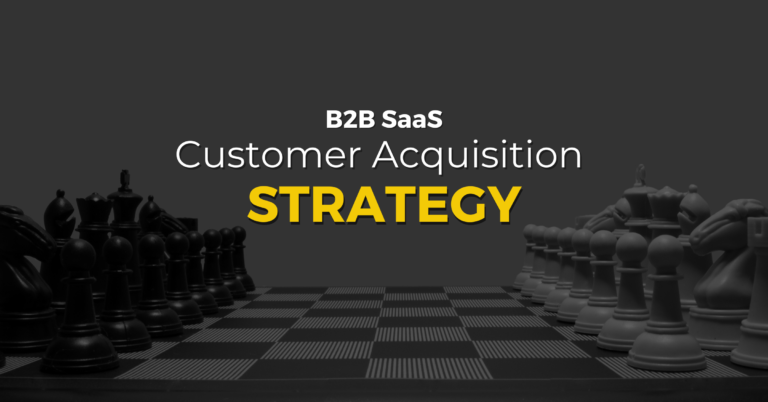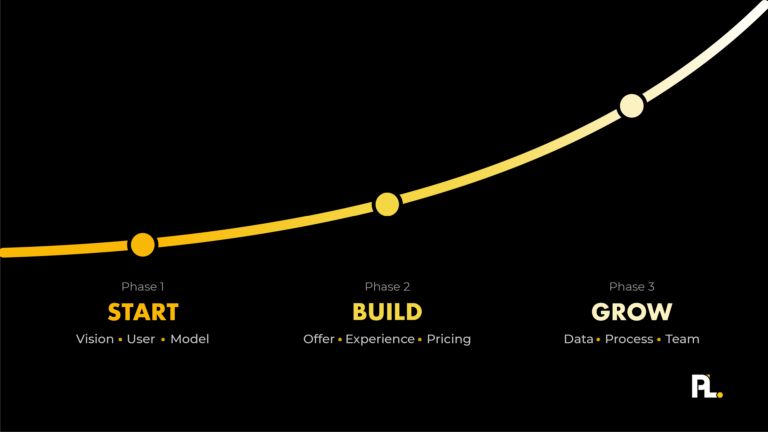Before starting our product-led sales platform HeadsUp, we did our research.
We chatted with more than 400 professionals to learn about the common challenges go-to-market teams face when approaching their strategy.
After surveying these executives, we found that companies that have transitioned from a more sales-led to a product-led growth (PLG) approach may have slowed progress after some initial success. They soon realize the shift to PLG isn’t a quick, six-week, be-done business update.
Instead, it’s a multi-year commitment.
In this article, I’ll share their common challenges and what can be done to ease that pain.
What Is HeadsUp?
HeadsUp is a tool that helps Sales teams better understand and engage with customers using data.
HeadsUp started because myself and my co-founder previously worked at another B2B SaaS focused on government tech verticals.
While there, we noticed that one big use for our cloud data stack was to help go-to-market teams:
- Become more efficient.
- Understand their customers better.
- Make more informed decisions.
Seeing this growing need for go-to-market teams to identify and understand first-party data, particularly product usage data, led to our new company – HeadsUp.
What We Learned in User Research
After talking to about 400 business professionals on the GTM side, we looked at how market teams functioned. We learned:
- There was a distinct need for increased collaboration within GTM teams; also more collaboration between GTM teams and other cross-functional stakeholders, including product engineering.
- Research confirmed the increasing need for product users’ data.
Let’s look at these a bit more.
Increased Collaboration in Go-To-Market Teams
Within go-to-market teams, including Sales, Customer Success, and Marketing, I saw that roles are more fluid in product-led growth. For example, if you're an Account Executive, closing a customer is remarkably similar to the upsell motion a Customer Success rep or Account Manager would own in a sales-led company.
Similarly, marketing is not just at the top of the funnel anymore; there’s an increased need for the marketing team to:
- Resurrect customers
- Upsell paid customers to enterprise plans
- Help with customer onboarding
- And more
Increased Collaboration Between Go-to-Market Teams and Product Engineering
As mentioned before, there’s a need for increased collaboration, not just within go-to-market teams but also between cross-functional stakeholders such as Engineering teams.
During our early research, many companies spoke about using data for feature prioritization, feature building, risk mitigation, etc.
Of course, the amount of access we have to data is different. You can have a million users paying $10 per month for a product, then statistically sample relevant data to figure which features to build — using use cases and various personas.
This brings us to…
Why Is Product Usage Data so Important?
We’ve always known that product users’ data is critical for go-to-market teams. Sales leaders and Customer Service teams want to understand whether a free trial prospect is really using the product; the same goes for a current client.
Our survey of hundreds of executives showed that Customer Success Managers (CSMs) now handle, on average, somewhere in the range of a couple of hundred accounts on their books.
That’s more than ever before.
There are opportunities here — if smart, human interactions are introduced at the right points in conjunction with automation.
- Now, with PLG, it's less important what the relationship Sales teams or a CSM has with a company’s decision-makers. Instead, it’s more important to know if individuals using the product get value. If they don't, they’ll churn. That's a more core and causal indicator of churn than relationships.
- Also, in PLG and high-velocity sales, the price points are lower than ever, meaning sales or CSMs have more accounts. It’s no longer possible to have relationships with every person in every account.
This is why data is now even more important to help you be specific in your approach.
- How can we demonstrate value?
- How can we nudge an action?
Having good data helps CSMs (or whoever) apply the highest leverage to drive the best revenue outcomes.
For success, everyone needs to use product usage data, not just product teams.
The product and engineering teams are always early adopters of product usage data. They’ll implement tools like Segment or Amplitude. But some custom data—what is specifically logged, how it's displayed, etc.—may not be in a format that is easily actionable and used by your go-to-market teams.
To counter this, there needs to be some interpretation, a way to get that data in a format easily understandable by go-to-market teams. They are much less interested in looking at raw data and more interested in practical ways to use it for their accounts, like learning whether clients are using the product or whether they're extracting value from the product.
The opportunity is how to find more relevant data and/or interpret that data for go-to-market teams so they can use it effectively.
Focus on Data Interpretation
This is the key to all of this: to make data actionable and to get the most value from it.
What is more optimal and logical as a long-term solution is to extract, transform, and load (ETL) a product users’ data into a cloud data warehouse. And then, within that cloud data warehouse, make the appropriate manipulations to create actionable metrics. Here’s a good article on a PLG Marketing Tech Steck.
Unfortunately, a lot of small companies don't have the data engineering or data science resources to create those metrics. And when they do have these tools and expertise, they don't necessarily understand the frameworks or know the appropriate ways to create effective metrics for the GTM team.
FYI: currently, there’s a class of tools called reverse ETL, which sends data out from the warehouse down to these applications that are quite hot right now because of this specific use case.
Most Actionable Metrics for Product-Led Companies
Let’s take a look at what matters most:
- Product qualified leads (PQLs) are particularly important and help us understand what the “patient zero” configuration looks like (i.e., formerly free users who’ve converted to paid.) This lets Sales teams focus on that subset.
- For Customer Success teams, it’s important to understand whether an account has successfully onboarded and to understand activation. Knowing if accounts used the product and found value. If they haven’t, we see a very heavy correlation to churn.
- Identifying upsell opportunities when the re-subscription time comes.
- After activation, there may be other issues to watch for. For example, there’s a need to continue identifying and being proactive when it comes to product usage drop-offs, etc.
Hiring Go-to-Market Individuals
Too often, product-led companies hire their first go-to-market individuals late in the game.
Product-led companies often think they can keep growing organically via their product. Often, their leaders are either product or engineering, so this may be a factor in why they think they can continue this way much longer than they really should.
They wait too late before looking for GTM, perhaps after growth has slowed or churn has begun.
- Smart product-led companies hire their first GTM individual when things are still healthy.
- The first hire should be a Sales leader or two Account Executives (AE).
The reason for hiring two AEs is for comparison. You can see what works. It makes it easier to know what to duplicate and what to discard. And to know whether any problems are due to the product or one individual.
In Conclusion
Both collaboration and product data are key ingredients to a product-led growth strategy. Focusing on these two areas will help you on your journey to becoming a successful product-led business.









